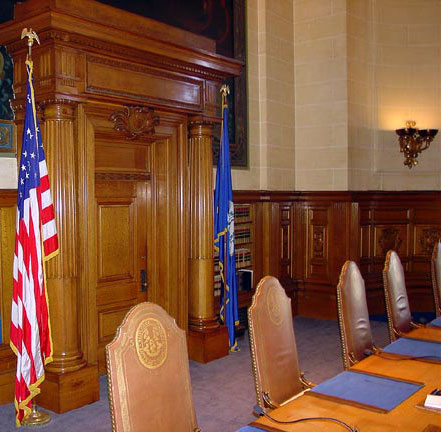
- Directories Home
- Administration - PDF
- Adult Probation
- Bail Services
- Court Service Centers
- Court Support Services
- Family Services
- Family Support Magistrates
- Geographical Areas
- Housing
- Judges
- Judicial Districts
- Juvenile Detention
- Juvenile Matters - PDF
- Juvenile Probation
- Law Libraries
- Magistrates - PDF
- Probate Courts
- Small Claims
- Staff Phone Directory
- State Marshals
- Support Enforcement
- FAQ Home
- About Attorneys
- Adult & Juvenile Offenses for 16-yr olds - PDF
- Adult Probation
- Americans with Disabilities Act
- Bail
- Child Support
- Connecticut Law Journal
- Court Records
- Divorce
- DOJ Civil Rights Complaints
- Domestic Violence
- E-filing FAQs - PDF
- Family
- Foreclosure Mediation
- How can I complain about a judge?
- Jury Service
- Juvenile Matters Links
- Juvenile Probation
- Juvenile Residential Services
- Landlord/Tenant/ Housing
- Language Help (LEP)
- Law Libraries FAQs
- Legal Clinics and Help
- Legal Notices by Publication
- Media
- Minimum Continuing Legal Education
- Online Dispute Resolution
- Prison Rape Elimination Act (PREA)
- Probate Court
- Representing Yourself
- Small Claims
- Traffic Violations
- Victim Services
- What is CSSD?
Overview of the Supreme Court
Virtual Tour of the Supreme Court
How Cases Come to the Supreme Court
Almost always, the cases heard in the
Supreme Court have
first been decided in the
Superior Court, which is a trial court where a judge or a jury makes a
decision
based on conflicting stories from witnesses who describe the
history of the controversy. The losing party in the Superior Court has the
right to one appeal to another court. Most of these appeals go first to the
Appellate Court,
Connecticut's intermediate court of appeals.
controversy. The losing party in the Superior Court has the
right to one appeal to another court. Most of these appeals go first to the
Appellate Court,
Connecticut's intermediate court of appeals.
Appeals come to the Supreme
Court in one of two ways. A person who is dissatisfied with the judgment of
the Appellate Court can ask the Supreme Court to take another look at the
legal issues that are at stake, by filing a request that the appeal be
certified. Other appeals come to the Supreme Court as a result of a decision
to transfer the case to itself instead of having it be heard in the
Appellate Court, or as a result of a law mandating that an appeal must be
heard by the Supreme Court. For example, appeals involving reapportionment
of voting districts and death penalty cases are always heard in the Supreme
Court. After an appeal has been taken, each party files a brief and the
court then schedules the case for oral argument at the next available
session of the court.
If you listen to an oral argument at an
appellate-level court such as the Supreme Court, you will notice that it
differs from an oral argument in the trial court. In the trial court, the
lawyer is addressing a jury of lay persons or a judge, urging the jury or
judge to make certain findings of fact. In the Supreme Court, the lawyer is
addressing a panel of justices, urging them to reach certain conclusions of
law.
Before the oral argument, each justice has already carefully studied the written briefs that present each party's legal arguments, as well as the factual and procedural history of the case. The justices therefore ask many questions in order to understand fully the positions being advanced by each party. Although the justices sometimes ask about the facts, the dialogue between the lawyers and the court centers on issues of law. The justices expect the lawyers to know how the present case fits in with other cases that the court has decided in the past and with statutes that the legislature has adopted. The justices may also inquire into the possible effect that a ruling in this case may have on related factual situations that may arise in the future. Experienced lawyers welcome this dialogue as the best way to win a close case. They know that oral argument may change the justices' views of who should prevail on appeal or of why a particular party should prevail.
Home | Common Legal Words | Contact Us | Related Links | Site Index | Website Awards | Policies and Disclaimers | CT.gov | Public Defender Services
Connecticut Judicial Branch © 2017